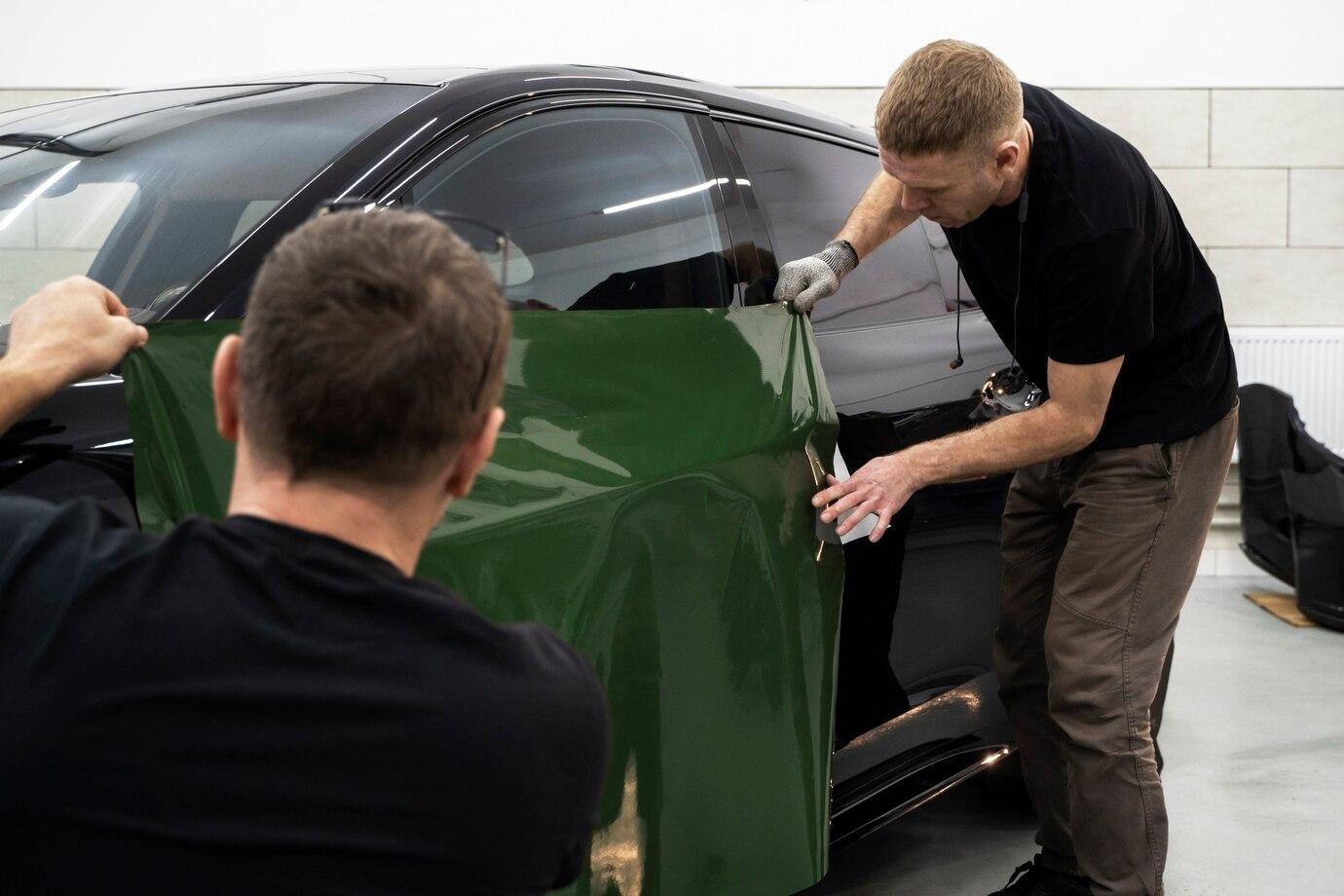Notifications

8 minutes, 24 seconds
-289 Views 0 Comments 0 Likes 0 Reviews

Owning a car is more than just a convenience; it’s a significant investment that requires care and maintenance. One of the most popular methods to preserve a car's aesthetic and structural integrity is applying Car Protection Film. But with the rising costs of car care, many vehicle owners ask: Is it worth the investment? In this blog, we'll delve into the details of Car Protection Film, its benefits, costs, and whether it’s the right choice for you. We'll also touch on related protective solutions like Nano Ceramic Coating and العازل الحراري للسيارات.
Car Protection Film, also known as Paint Protection Film (PPF), is a transparent, durable urethane material applied to a car’s painted surfaces. It acts as a barrier against scratches, stone chips, road debris, and other environmental contaminants. This invisible shield maintains the vehicle's paintwork, keeping it looking new for years.
Clear Bra: This is the most common type of PPF, providing high-gloss protection without altering the car’s appearance.
Matte Finish Film: Ideal for those who prefer a satin or matte look while still enjoying protective benefits.
Self-Healing Film: Advanced films that can "heal" minor scratches with heat exposure.
The cost of Car Protection Film can vary widely based on several factors:
Size of the Vehicle: Larger vehicles require more material, increasing the overall cost.
Coverage Area: Full-body coverage will cost significantly more than partial applications (e.g., hood, bumper, and mirrors).
Film Type: Premium films with features like self-healing or matte finishes come at a higher price.
Professional Installation: Labor costs can vary based on expertise and location.
Partial Coverage (front bumper, hood, side mirrors): $500 - $1,500
Full Coverage: $2,000 - $5,000
Luxury Vehicles: Can exceed $7,000 due to specialized film and labor.
While these numbers might seem high, it's essential to weigh them against potential repainting costs, which can be much higher in the long run.
Everyday driving exposes your car to hazards like gravel, road debris, and minor abrasions. Car Protection Film acts as a barrier, preventing these elements from damaging the paint.
Prolonged exposure to sunlight can cause paint to fade over time. PPF includes UV inhibitors that protect your car’s paint from sun damage, much like العازل الحراري للسيارات (thermal insulation for cars) shields interiors from heat.
A car with pristine paintwork fetches a higher resale value. Car Protection Film ensures your vehicle looks newer for longer, making it more appealing to potential buyers.
Dirt, grime, and bird droppings are easier to clean off PPF-covered surfaces. Plus, with the addition of Nano Ceramic Coating, maintenance becomes even simpler due to its hydrophobic properties.
While both Car Protection Film and Nano Ceramic Coating protect your car, they serve slightly different purposes and can complement each other.
Physical Barrier: Protects against scratches, chips, and abrasions.
Appearance: Maintains original paint finish or offers matte options.
Durability: Typically lasts 5-10 years, depending on the film quality.
Chemical Barrier: Protects against UV rays, chemical stains, and oxidation.
Hydrophobic Effect: Makes the car’s surface water-repellent, simplifying cleaning.
Gloss Enhancement: Adds a deep, reflective shine to the car’s paint.
For maximum protection, many car owners opt for both. Apply Car Protection Film to high-impact areas and finish with Nano Ceramic Coating for added shine and ease of maintenance.
If you’re on a budget, prioritize PPF for the front of the car and use ceramic coating for the rest.
العازل الحراري للسيارات (thermal insulation for cars) is another protective solution that complements PPF and ceramic coatings. It primarily focuses on regulating the car’s internal temperature, reducing heat build-up, and protecting the interior from UV damage.
Heat Reduction: Keeps the interior cooler, especially during Abu Dhabi’s hot summers.
Interior Protection: Prevents dashboard fading and cracking.
Energy Efficiency: Reduces the need for air conditioning, improving fuel efficiency.
Privacy: Tinted films offer added privacy while complying with local regulations.
New or High-End Cars: Protecting a brand-new or luxury vehicle helps maintain its pristine condition.
Long-Term Ownership: If you plan to keep your car for many years, PPF can prevent costly repainting.
Harsh Driving Conditions: Regular highway driving exposes your car to debris, making PPF a valuable shield.
Resale Value: Maintaining perfect paintwork can increase your car’s resale value.
Older Vehicles: If your car is already showing significant wear, PPF may not offer enough value.
Short-Term Ownership: If you plan to sell your car within a year, the investment might not pay off.
Tight Budgets: While protective, PPF is a considerable expense. Alternatives like Nano Ceramic Coating might offer sufficient protection at a lower cost.
Regular Washing: Use mild soaps and avoid abrasive cleaning tools.
Avoid Harsh Chemicals: Steer clear of waxes or polishes not recommended for PPF.
Inspect Periodically: Check for edges lifting or signs of wear and address them promptly.
Professional Maintenance: Some service centers offer maintenance packages for PPF, ensuring longevity.
Investing in Car Protection Film can be a smart move for car owners who want to maintain their vehicle’s appearance and resale value. While the upfront cost might seem steep, the long-term benefits often outweigh the initial expense. For added protection and aesthetic enhancement, combining PPF with Nano Ceramic Coating and العازل الحراري للسيارات provides a comprehensive shield against environmental factors.
Ultimately, the decision depends on your car’s value, your budget, and how much you value maintaining its pristine condition. Whether you choose PPF, ceramic coatings, or thermal insulation, protecting your car is always a wise investment.
Car Protection Film Car Ceramic Coating العازل الحراري للسيارات

